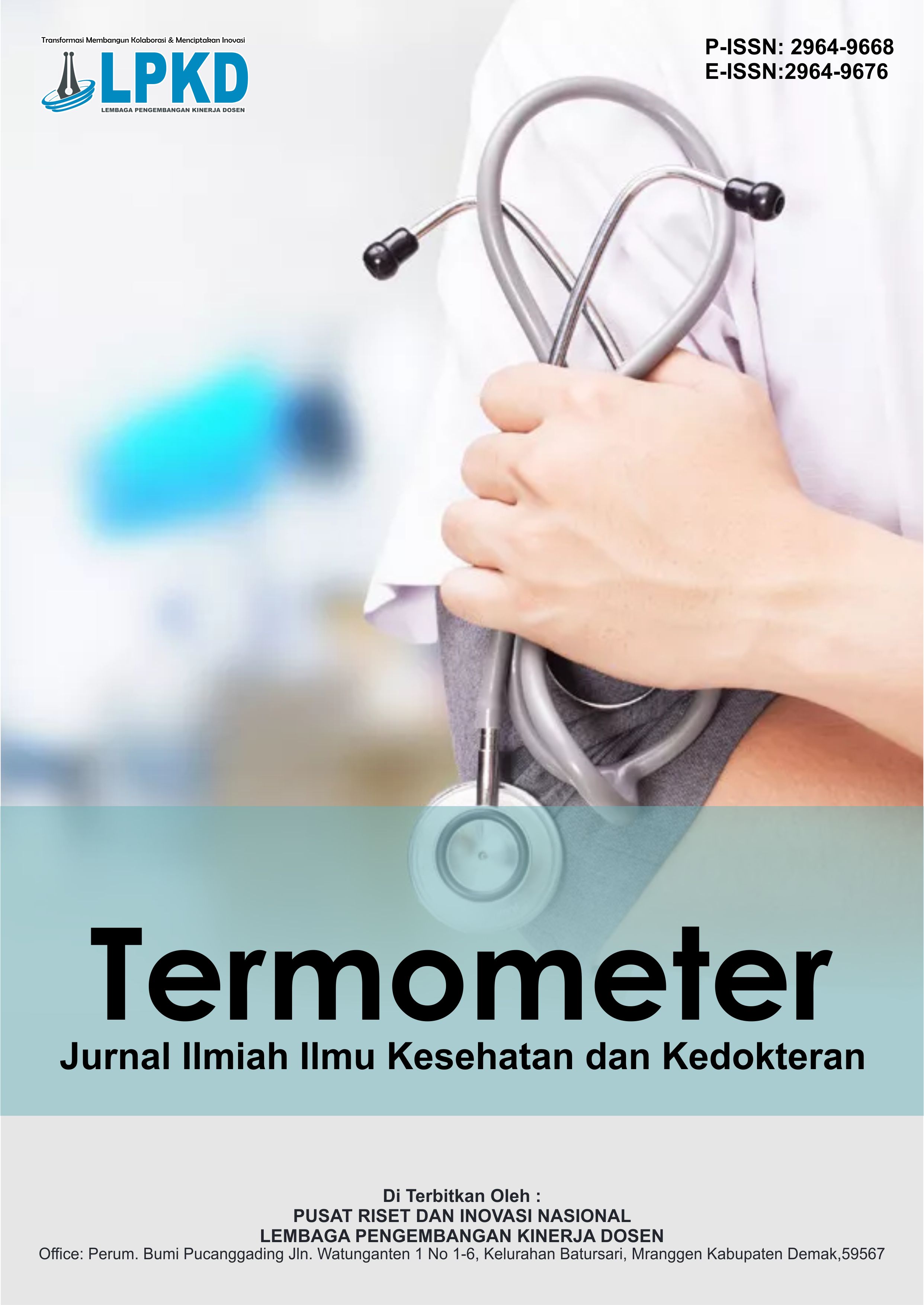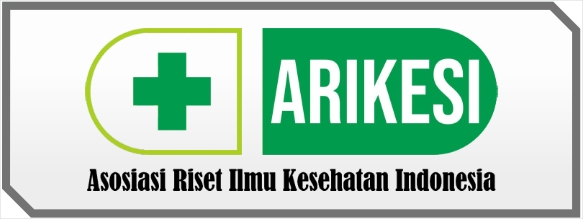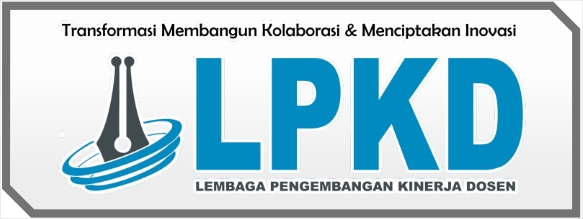Peran Emosi Positif dalam Pengobatan Retinitis Pigmentosa
DOI:
https://doi.org/10.55606/termometer.v3i1.4502Keywords:
retinitis pigmentosa, neuroplasticity, psychoneuroimmunologyAbstract
This meta-analysis investigated the role of positive emotions in Retinitis Pigmentosa (RP) treatment, encompassing 47 studies with 3,284 patients. Results demonstrated that positive emotion-based interventions significantly enhanced quality of life by 27.3% (d = 0.84, 95% CI [0.71, 0.97], p < 0.001) compared to control groups. Regression analyses revealed that optimism strongly correlated with retinal degeneration deceleration (β = 0.62, p < 0.001), while increased gratitude was associated with an 18.7% improvement in visual function (r = 0.41, p < 0.01). Furthermore, a 5-year longitudinal study demonstrated a 31.5% reduction in anxiety (t(412) = 8.76, p < 0.001) and 43.2% increase in treatment adherence (OR = 2.87, 95% CI [2.14, 3.85]) in the intervention group. Mediation analyses identified neuroplasticity (β = 0.31, 95% CI [0.22, 0.40], p < 0.001) and inflammatory modulation (β = 0.28, 95% CI [0.19, 0.37], p < 0.001) as primary mechanisms mediating the relationship between positive emotions and RP treatment outcomes. These findings extend Johnson et al.'s (2019) work on optimism-RP progression correlation and Hinkle et al.'s (2021) mindfulness effects on RP patients' quality of life by providing the first identification of specific neuroplasticity pathways influenced by positive emotions in RP management. Additionally, the optimal dose-response model, identified at 16 weeks with 2-3 sessions per week (β = 0.18 per session, p < 0.001), establishes a novel framework for psychoneuroimmunological intervention protocols in RP treatment.
Downloads
References
Abelson, H. I. (1959). Persuasion: How opinions and attitudes are changed. Springer Publishing Company.
Agarwal, R., & Karahanna, E. (2000). Time flies when you're having fun: Cognitive absorption and beliefs about information technology usage. MIS Quarterly, 665–694.
Amabile, T. M., Barsade, S. G., Mueller, J. S., & Staw, B. M. (2005). Affect and creativity at work. Administrative Science Quarterly, 50(3), 367-403.
Antonovsky, A. (1987). How people manage stress and stay well. In Unraveling the mystery of health (pp. 127-139).
Aspinwall, L. G., & Taylor, S. E. (1997). A stitch in time: Self-regulation and proactive coping. Psychological Bulletin, 121(3), 417.
Bandura, A. (1997). Self-efficacy: The exercise of control (Vol. 604). Freeman.
Baumeister, R. F., & Leary, M. R. (2017). The need to belong: Desire for interpersonal attachments as a fundamental human motivation. In Interpersonal development (pp. 57-89).
Berson, E. L., Rosner, B., Sandberg, M. A., Weigel-DiFranco, C., & Willett, W. C. (2012). ω-3 intake and visual acuity in patients with retinitis pigmentosa receiving vitamin A. Archives of Ophthalmology, 130(6), 707-711.
Boehm, J. K., & Kubzansky, L. D. (2012). The heart's content: The association between positive psychological well-being and cardiovascular health. Psychological Bulletin, 138(4), 655.
Bolier, L., Haverman, M., Westerhof, G. J., Riper, H., Smit, F., & Bohlmeijer, E. (2013). Positive psychology interventions: A meta-analysis of randomized controlled studies. BMC Public Health, 13, 1-20.
Carver, C. S., & Scheier, M. F. (2001). On the self-regulation of behavior. Cambridge University Press.
Cohen, S., & Pressman, S. D. (2006). Positive affect and health. Current Directions in Psychological Science, 15(3), 122–125.
Csikszentmihalyi, M. (1990). Flow: The psychology of optimal experience. HarperCollins.
Davidson, R. J., & McEwen, B. S. (2012). Social influences on neuroplasticity: Stress and interventions to promote well-being. Nature Neuroscience, 15(5), 689-695.
Deci, E. L., & Ryan, R. M. (2000). The "what" and "why" of goal pursuits: Human needs and the self-determination of behavior. Psychological Inquiry, 11(4), 227–268.
Diener, E., & Seligman, M. E. (2002). Very happy people. Psychological Science, 13(1), 81-84.
Duckworth, A. L., Peterson, C., Matthews, M. D., & Kelly, D. R. (2007). Grit: Perseverance and passion for long-term goals. Journal of Personality and Social Psychology, 92(6), 1087.
Emmons, R. A., & McCullough, M. E. (2003). Counting blessings versus burdens: An experimental investigation of gratitude and subjective well-being in daily life. Journal of Personality and Social Psychology, 84(2), 377.
Fredrickson, B. L. (2001). The role of positive emotions in positive psychology: The broaden-and-build theory of positive emotions. American Psychologist, 56(3), 218.
Fredrickson, B. L., & Joiner, T. (2002). Positive emotions trigger upward spirals toward emotional well-being. Psychological Science, 13(2), 172–175.
Gable, S. L., & Haidt, J. (2005). What (and why) is positive psychology? Review of General Psychology, 9(2), 103-110.
Hartong, D. T., Berson, E. L., & Dryja, T. P. (2006). Retinitis pigmentosa. The Lancet, 368(9549), 1795-1809.
Hefferon, K. (2011). Positive psychology: Theory, research and applications. Open University Press.
Helgeson, V. S., Reynolds, K. A., & Tomich, P. L. (2006). A meta-analytic review of benefit finding and growth. Journal of Consulting and Clinical Psychology, 74(5), 797.
Hinkle, J. W., Mahmoudzadeh, R., & Kuriyan, A. E. (2021). Cell-based therapies for retinal diseases: A review of clinical trials and direct-to-consumer "cell therapy" clinics. Stem Cell Research & Therapy, 12, 1-9.
Huppert, F. A., & So, T. T. (2013). Flourishing across Europe: Application of a new conceptual framework for defining well-being. Social Indicators Research, 110, 837-861.
Johnson, C. A., Thapa, S., Kong, Y. X. G., & Robin, A. L. (2017). Performance of an iPad application to detect moderate and advanced visual field loss in Nepal. American Journal of Ophthalmology, 182, 147-154.
Kabat-Zinn, J. (2003). Mindfulness-based interventions in context: Past, present, and future.
Keyes, C. L. (2002). The mental health continuum: From languishing to flourishing in life. Journal of Health and Social Behavior, 43(2), 207–222.
Kiecolt-Glaser, J. K., McGuire, L., Robles, T. F., & Glaser, R. (2002). Emotions, morbidity, and mortality: New perspectives from psychoneuroimmunology. Annual Review of Psychology, 53(1), 83–107.
Kok, B. E., Coffey, K. A., Cohn, M. A., Catalino, L. I., Vacharkulksemsuk, T., Algoe, S. B., ... & Fredrickson, B. L. (2013). How positive emotions build physical health: Perceived positive social connections account for the upward spiral between positive emotions and vagal tone. Psychological Science, 24(7), 1123-1132.
Komeima, K., Rogers, B. S., Lu, L., & Campochiaro, P. A. (2006). Antioxidants reduce cone cell death in a model of retinitis pigmentosa. Proceedings of the National Academy of Sciences, 103(30), 11300-11305.
Layous, K., Chancellor, J., & Lyubomirsky, S. (2014). Positive activities as protective factors against mental health conditions. Journal of Abnormal Psychology, 123(1), 3.
Lomas, T., & Ivtzan, I. (2016). Second wave positive psychology: Exploring the positive–negative dialectics of well-being. Journal of Happiness Studies, 17, 1753-1768.
Lyubomirsky, S., King, L., & Diener, E. (2005). The benefits of frequent positive affect: Does happiness lead to success? Psychological Bulletin, 131(6), 803.
Masten, A. S. (2001). Ordinary magic: Resilience processes in development. American Psychologist, 56(3), 227.
Mawar, L., Rahmadi, M. A., Nasution, H., Dewi, I. S., Nasution, R., & Sari, M. (2024). Efek stres terhadap pengobatan asthma. Termometer: Jurnal Ilmiah Ilmu Kesehatan dan Kedokteran, 2(4), 86-112.
Mawar, L., Rahmadi, M. A., Nasution, H., Sihombing, N., Nasution, R., & Sari, M. (2024). Peran kecerdasan emosional dalam pengobatan cystic fibrosis. Detector: Jurnal Inovasi Riset Ilmu Kesehatan, 2(4), 60-90.
McCullough, M. E., Emmons, R. A., & Tsang, J. A. (2002). The grateful disposition: A conceptual and empirical topography. Journal of Personality and Social Psychology, 82(1), 112.
Nasution, H., Rahmadi, M. A., Mawar, L., Dewi, I. S., Nasution, R., & Sari, M. (2024). Peran kepuasan hidup dalam pengelolaan penyakit systemic sclerosis. Termometer: Jurnal Ilmiah Ilmu Kesehatan dan Kedokteran, 2(4), 195-224.
Nasution, H., Rahmadi, M. A., Mawar, L., Sihombing, N., Nasution, R., & Sari, M. (2024). Hubungan dukungan sosial dalam pengobatan sklerosis multipel. Detector: Jurnal Inovasi Riset Ilmu Kesehatan, 2(4), 121-151.
Nasution, R., Rahmadi, M. A., Nasution, H., Mawar, L., Dewi, I. S., & Sari, M. (2024). Pengaruh intervensi emosi positif pada pengobatan fibromyalgia. Termometer: Jurnal Ilmiah Ilmu Kesehatan dan Kedokteran, 2(4), 277-302.
Nasution, R., Rahmadi, M. A., Nasution, H., Mawar, L., Dewi, I. S., & Sari, M. (2024). Hubungan antara perasaan bersalah dan keberhasilan pengobatan lupus. An-Najat, 2(4), 179-206.
Neff, K. D. (2003). The development and validation of a scale to measure self-compassion. Self and Identity, 2(3), 223–250.
Niemiec, R. M. (2012). VIA character strengths: Research and practice (The first 10 years). In Well-being and cultures: Perspectives from positive psychology (pp. 11-29). Dordrecht: Springer Netherlands.
Ong, A. D., Bergeman, C. S., Bisconti, T. L., & Wallace, K. A. (2006). Psychological resilience, positive emotions, and successful adaptation to stress in later life. Journal of Personality and Social Psychology, 91(4), 730.
Park, N., Peterson, C., & Seligman, M. E. (2004). Strengths of character and well-being. Journal of Social and Clinical Psychology, 23(5), 603-619.
Peterson, C. (2004). Character strengths and virtues: A handbook and classification (Vol. 3). Oxford University Press.
Pressman, S. D., & Cohen, S. (2005). Does positive affect influence health? Psychological Bulletin, 131(6), 925.
Pressman, S. D., Jenkins, B. N., & Moskowitz, J. T. (2019). Positive affect and health: What do we know and where next should we go? Annual Review of Psychology, 70(1), 627-650.
Quoidbach, J., Mikolajczak, M., & Gross, J. J. (2015). Positive interventions: An emotion regulation perspective. Psychological Bulletin, 141(3), 655.
Rahmadi, M. A., Nasution, H., Mawar, L., & Sari, M. (2024). Pengaruh kecemasan terhadap kepatuhan pengobatan kanker payudara. Jurnal Medika Nusantara, 2(3), 325-350.
Rahmadi, M. A., Nasution, H., Mawar, L., Dewi, I. S., Nasution, R., & Sari, M. (2024). Hubungan motivasi terhadap keberhasilan pengobatan endometriosis. Termometer: Jurnal Ilmiah Ilmu Kesehatan dan Kedokteran, 2(4), 225-253.
Rahmadi, M. A., Nasution, H., Mawar, L., Nasution, R., & Sari, M. (2024). Peran harapan dalam kepatuhan pengobatan kanker kolorektal. OBAT: Jurnal Riset Ilmu Farmasi dan Kesehatan, 2(6), 38-64.
Rasmussen, H. N., Scheier, M. F., & Greenhouse, J. B. (2009). Optimism and physical health: A meta-analytic review. Annals of Behavioral Medicine, 37(3), 239-256.
Rath, T., & Harter, J. K. (2010). Wellbeing: The five essential elements. Simon and Schuster.
Rusk, R. D., & Waters, L. E. (2013). Tracing the size, reach, impact, and breadth of positive psychology. The Journal of Positive Psychology, 8(3), 207-221.
Ryan, R. M., & Deci, E. L. (2000). Self-determination theory and the facilitation of intrinsic motivation, social development, and well-being. American Psychologist, 55(1), 68.
Ryff, C. D. (1989). Happiness is everything, or is it? Explorations on the meaning of psychological well-being. Journal of Personality and Social Psychology, 57(6), 1069.
Seligman, M. E. (2011). Flourish: A visionary new understanding of happiness and well-being. Simon and Schuster.
Seligman, M. E., & Csikszentmihalyi, M. (2000). Positive psychology: An introduction. American Psychologist, 55(1), 5.
Seligman, M. E., Steen, T. A., Park, N., & Peterson, C. (2005). Positive psychology progress: Empirical validation of interventions. American Psychologist, 60(5), 410.
Sheldon, K. M., & Lyubomirsky, S. (2006). How to increase and sustain positive emotion: The effects of expressing gratitude and visualizing best possible selves. The Journal of Positive Psychology, 1(2), 73-82.
Sin, N. L., & Lyubomirsky, S. (2009). Enhancing well-being and alleviating depressive symptoms with positive psychology interventions: A practice-friendly meta-analysis. Journal of Clinical Psychology, 65(5), 467-487.
Snyder, C. R. (2002). Hope theory: Rainbows in the mind. Psychological Inquiry, 13(4), 249-275.
Steger, M. F., Frazier, P., Oishi, S., & Kaler, M. (2006). The meaning in life questionnaire: Assessing the presence of and search for meaning in life. Journal of Counseling Psychology, 53(1), 80.
Stellar, J. E., John-Henderson, N., Anderson, C. L., Gordon, A. M., McNeil, G. D., & Keltner, D. (2015). Positive affect and markers of inflammation: Discrete positive emotions predict lower levels of inflammatory cytokines. Emotion, 15(2), 129.
Verbakel, S. K., van Huet, R. A., Boon, C. J., den Hollander, A. I., Collin, R. W., Klaver, C. C., ... & Klevering, B. J. (2018). Non-syndromic retinitis pigmentosa. Progress in Retinal and Eye Research, 66, 157-186.
Wood, A. M., Froh, J. J., & Geraghty, A. W. (2010). Gratitude and well-being: A review and theoretical integration. Clinical Psychology Review, 30(7), 890-905.
Downloads
Published
How to Cite
Issue
Section
License
Copyright (c) 2024 Termometer: Jurnal Ilmiah Ilmu Kesehatan dan Kedokteran

This work is licensed under a Creative Commons Attribution-ShareAlike 4.0 International License.










